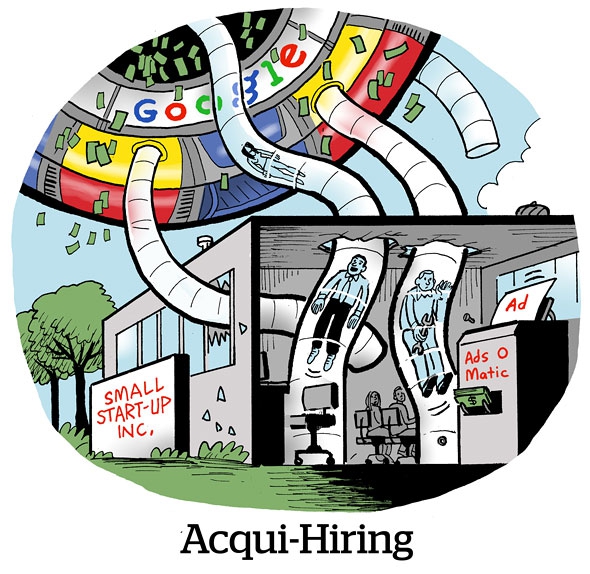How does an organisation ring fence the acquired talent?
In 2014, Facebook acquired a Bengaluru-based app development company, Little Eye Labs, for Rs 90 crore. This acquisition wasn’t for any product that Little Eye had developed, but solely for the team it had built over a year. The main catch were the four founders—programme analysis geeks — ex-Apple employee, Giridhar Murthy, ex IBMers, Lakshman Kakkirala and Kumar Rangarajan and IIT Kharagpur pass out ,Satyam Kandula.
If it wasn’t for this acquisition, it would have been quite difficult for Facebook to hire such high-quality talent in one go. In fact, immediately after this acquisition, the team at Little Eye Labs was shifted to Menlo Park, California, where they worked on improving the performance of the apps already developed by it.
In another development in 2015, real-estate portal, Commonfloor had acquired an app development company, Bakfy, despite the fact that the latter’s product wasn’t very useful for the former. What influenced Commonfloor to go for this acquisition was the team. It’s great ideas around real estate could help Commonfloor build innovative technologies, to assist people find properties online.

In the last couple of years, there have been around a dozen such acquihirings, where companies have been bought over just for their talent and not for their products.
Conventionally, mergers and acquisitions (M&A) are known to take place only in the financial, business or legal spaces, with some provisions being made to ensure that there is low attrition and no loss of key talent. However, in case of acquihiring, this entire process is reversed with people being put ahead in terms of priorities. This clearly precedes all other considerations.
Sounds quite promising, but imagine the scenario if the team calls it quits post the acquisition.
“Quite possible,” says Rajesh Padmanabhan, director & group CHRO, Welspun Group “The talent is free to quit legally as one cannot ring fence anyone by force.”
So how does an organisation ring fence the acquired talent?
“The entire business model revolves around people. So, the acquirer needs to have strong retentive and people growth strategies in place upfront,” says Padmanabhan.

“Acquisition often creates opportunities to develop synergies. A structured organisation design exercise is often required to project the new organisation structure, with HR playing a key role in putting this in place,” concurs Ramendrajit Sen, vice-president-human resources, Hewlett Packard Enterprise India.
Sen is not a great believer of acquihiring, though. “I have been involved in acquisitions for many reasons apart from talent acquisition. For the process to be successful, it should be driven more as part of a growth strategy related to products or technology and not primarily targeted at people,” he says.
Acquihiring is a tricky game. Both over valuing or mass exodus of key talent could be disastrous in case of acquihiring. It needs a perfect balance.
“There may be a compensation derivate model backing this to avoid market distractions. There is always a risk associated with providing too much importance to the acquihired talent and that could result in complacence and over security. So one needs to be cautious here,” adds Padmanabhan.
It requires expertise to handle people capability assessment valuations and integrate them into the model. A very personal touch from the HR is crucial for the success of the entire process.

“HR has the ability to integrate entities in a manner that retains the essence of the existing culture while deploying the acquirer’s cultural nuances. Although tough to manage, it is interesting to challenge one’s own ability,” says Yuvaraj Srivastava, CHRO, Makemytrip.
In the era of acquihiring, the ability to quickly build on to the organisational competence, and the expertise to handle integration is a must to lead the organisational agenda.
“The whole exercise needs to be handled with kid gloves and steel will. There has to be a strong purpose for the future, which sells well with the merged talent,” adds Padmanabhan.
During any acquisition, it is important to keep employees engaged through the entire transition period. There is often a lot of ambiguity in the organisation environment, when an acquisition is announced. This is where the change management skills of HR come into play. And it can be done through structured communication and continuous employee interaction.
At the end of the day, both the acquihirer and the acquihiree hugely benefit in this model, if conceived well.
Value our content... contribute towards our growth. Even a small contribution a month would be of great help for us.
Since eight years, we have been serving the industry through daily news and stories. Our content is free for all and we plan to keep it that way.
Support HRKatha. Pay Here (All it takes is a minute)




































